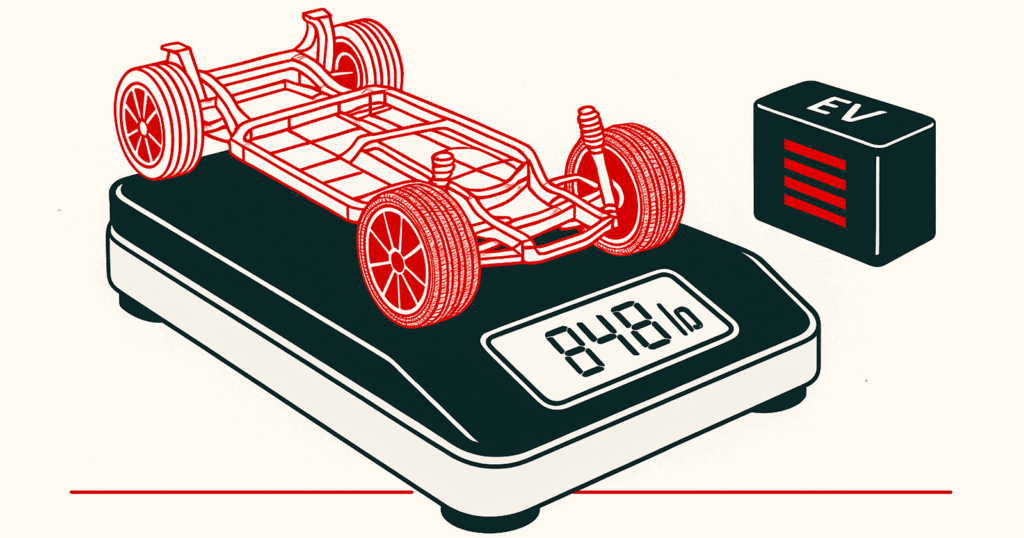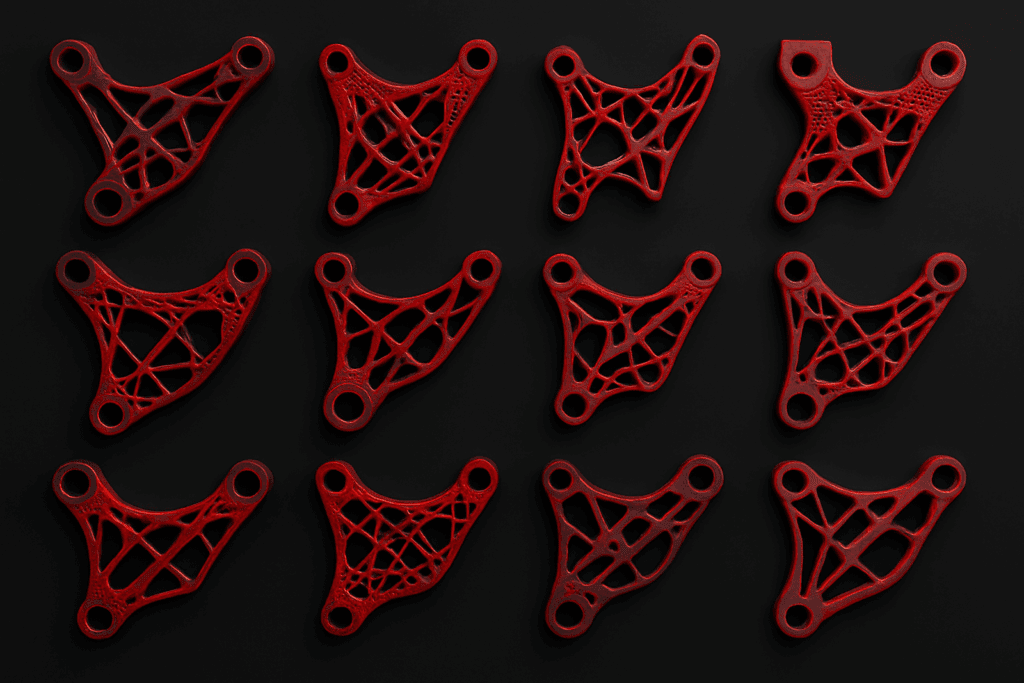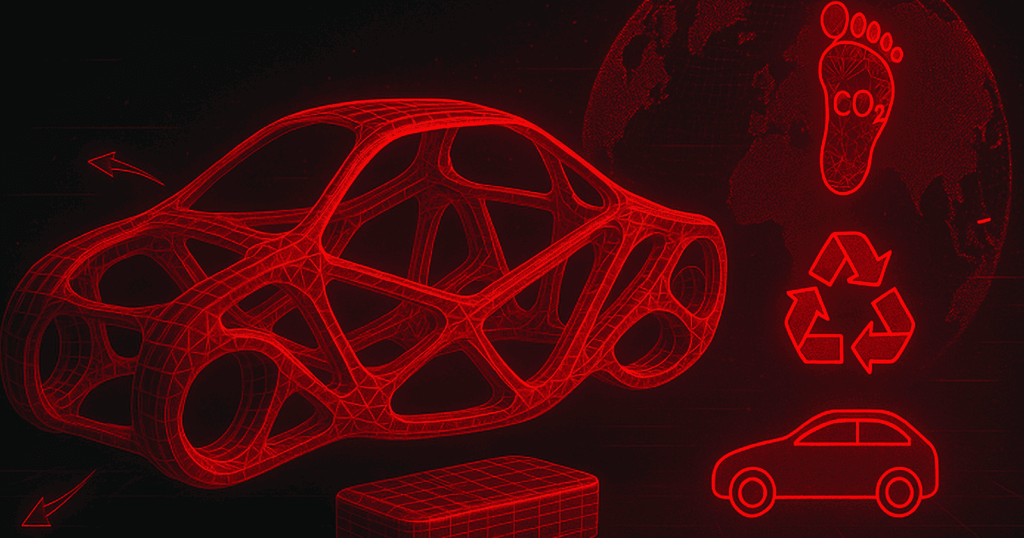Abstract
Electric vehicles (EVs) are reshaping the future of mobility, but their success depends on meeting strict requirements around efficiency, range, and structural integrity. Weight reduction is essential to meeting those goals, but traditional engineering methods often fall short when it comes to achieving significant gains without compromising performance.
Enter AI generative design for EVs—a cutting-edge approach that harnesses artificial intelligence to automate the creation of lightweight, structurally sound vehicle components. Leveraging advanced CAD and simulation tools, this method helps engineers optimize parts for strength, manufacturability, and energy efficiency, accelerating innovation across the EV industry.
Why Lightweight Design Matters for EVs
In an electric vehicle, every kilogram counts. Extra weight demands more battery power, which reduces range and increases costs. Lightweighting isn’t just a trend—it’s a requirement for building EVs that are both high-performing and affordable.
However, reducing weight must not compromise safety, durability, or manufacturability. The challenge lies in designing components that are not only lighter, but also structurally robust and compliant with strict industry standards. Traditional approaches, reliant on subtractive design and human intuition, can take weeks of iterations with limited outcomes.
That’s where AI generative design for EVs makes a powerful impact, delivering highly engineered components that meet performance and sustainability goals simultaneously.
What Is AI Generative Design for EVs?
Generative design is a process where engineers define goals and constraints—such as material limits, loads, and fabrication processes—and artificial intelligence explores thousands of possible design configurations. The software then returns a selection of optimized solutions, often featuring non-intuitive but highly effective geometries.
With AI generative design for EVs, this process becomes even more powerful. The AI isn’t just solving geometry—it’s balancing the demands of safety, performance, manufacturing, and environmental footprint. Designers can evaluate suggestions, tweak constraints, and push the envelope of what’s possible.
These capabilities allow teams to create lightweight battery enclosures, crash-absorbing brackets, HVAC components, and frame subsystems—all optimized for strength and manufacturability.
How AI Generative Design for EVs Enhances the Product Lifecycle
The advantages of AI generative design for EVs extend across the product development process. Here are several ways it adds value:
Performance-Driven Geometry
Instead of relying on rules-of-thumb or previous models, engineers let the AI engine determine the most efficient shape based on real-world load paths and intended function. The resulting structures are not only lighter but often stronger than their traditionally designed counterparts.
Faster Iteration Cycles
EV manufacturers face mounting pressure to reduce time-to-market. AI generative design for EVs allows engineers to explore dozens—or even hundreds—of design alternatives in hours instead of weeks. This faster iteration leads to earlier validation, fewer prototypes, and shorter development timelines.
Built-In Manufacturing Intelligence
A major concern with generative outputs is whether they can actually be produced. Fortunately, modern tools embed manufacturing constraints—such as minimum wall thickness, subtractive clearances, or additive print angles—into the design process. For EVs, this means designs can be optimized for casting, CNC, or 3D printing from the outset.
Integrated Simulation and Validation
AI generative design for EVs integrates seamlessly with simulation tools to validate structural integrity, thermal performance, vibration resistance, and crash behavior. These simulations help ensure that even lightweight parts can perform under real-world stress conditions.
Use Cases: Where It’s Making a Difference
AI generative design for EVs is already revolutionizing how certain parts are conceived and built:
– Battery Pack Supports: Minimizing structural weight while securing heavy batteries against vibration and impact.
– Crash Frames: Creating energy-absorbing subframes and mounts that deform predictably under collision.
– Interior Skeletons: Replacing solid steel seat mounts with optimized aluminum or composite forms.
– Cooling System Ducts: Generating organic shapes that route air more efficiently without adding bulk.
Each application results in parts that are lighter, stronger, and easier to produce—with shorter design cycles.
Environmental Benefits of AI Generative Design for EVs
Sustainability is one of the key motivations behind electrification, and AI generative design for EVs supports that mission. Reducing part weight directly improves vehicle range and reduces total emissions over a vehicle’s lifetime. But the benefits don’t stop there.
Generative design often uses less material, generates less waste during fabrication, and supports more efficient production methods like additive manufacturing. AI can even prioritize materials based on carbon footprint, recyclability, or end-of-life recovery potential.
As a result, manufacturers can make more responsible choices without sacrificing performance or speed.
Why 3DEXPERIENCE Is a Natural Fit
To take full advantage of AI generative design for EVs, engineers need a tightly integrated platform. 3DEXPERIENCE brings together design, simulation, optimization, and lifecycle management in a single cloud-based environment.
Designers can launch generative studies, validate them with structural and thermal simulations, and prepare files for fabrication without switching tools. This integration reduces version errors, encourages collaboration across departments, and makes it easier to standardize generative design practices.
Addressing Organizational Barriers
Like any emerging technology, AI generative design for EVs may face resistance. Teams may question output validity or worry about changing their workflows. Adoption can be accelerated through training, pilot projects, and a clear demonstration of ROI.
Once companies experience the time savings, material efficiency, and performance benefits firsthand, adoption tends to accelerate quickly—especially when leadership recognizes the strategic edge generative tools can provide.
Conclusion: The Road Ahead for AI Generative Design for EVs
The electric vehicle revolution demands smarter, lighter, and more efficient components—and AI generative design for EVs delivers exactly that. By automating the optimization process, integrating simulation, and aligning with modern manufacturing, this technology accelerates innovation and enhances product sustainability.
As pressure mounts to bring new EV models to market quickly and responsibly, adopting AI generative design for EVs becomes a competitive necessity rather than an optional upgrade.
To explore how your engineering team can benefit from AI generative design for EVs, contact Mecanica today for implementation support and expert guidance.



